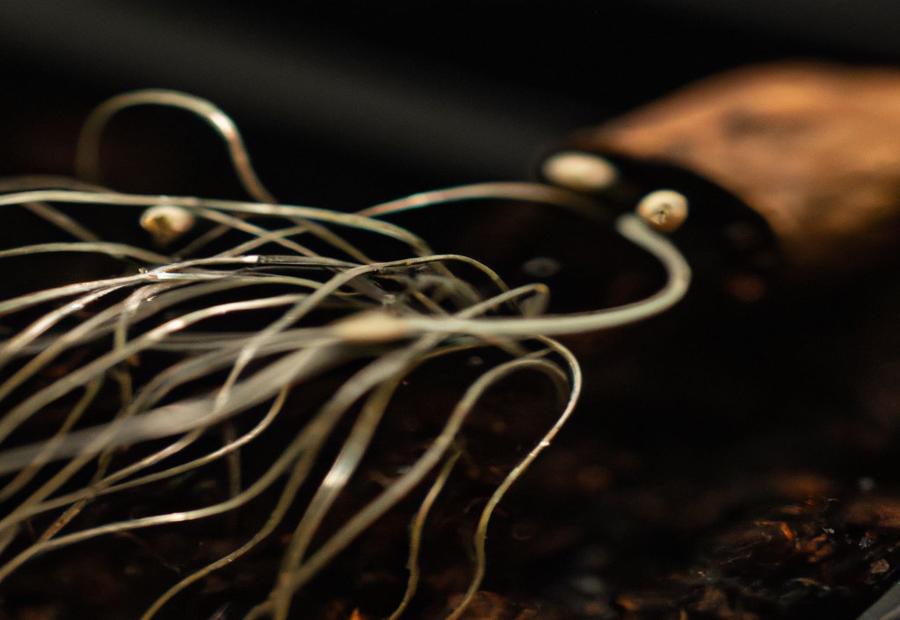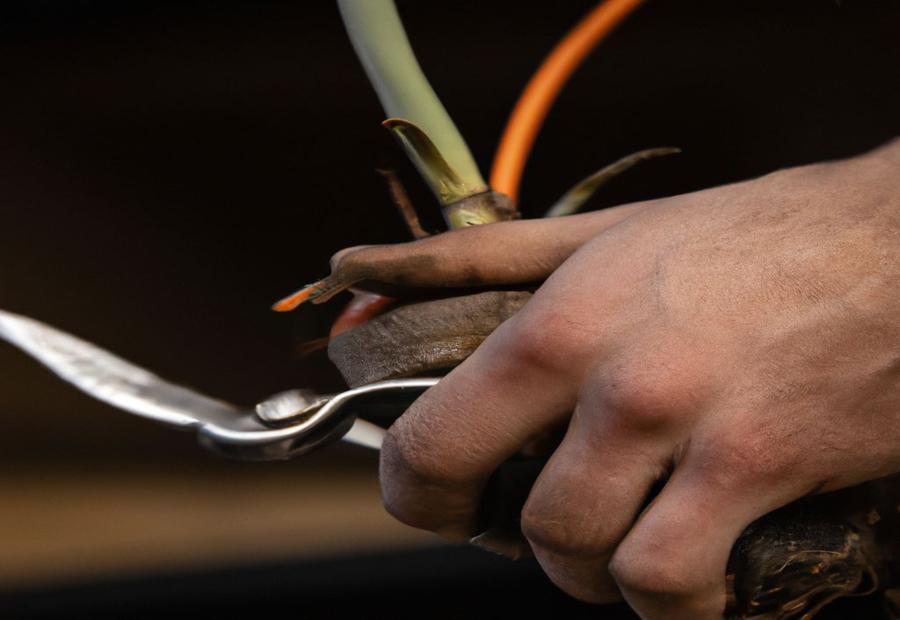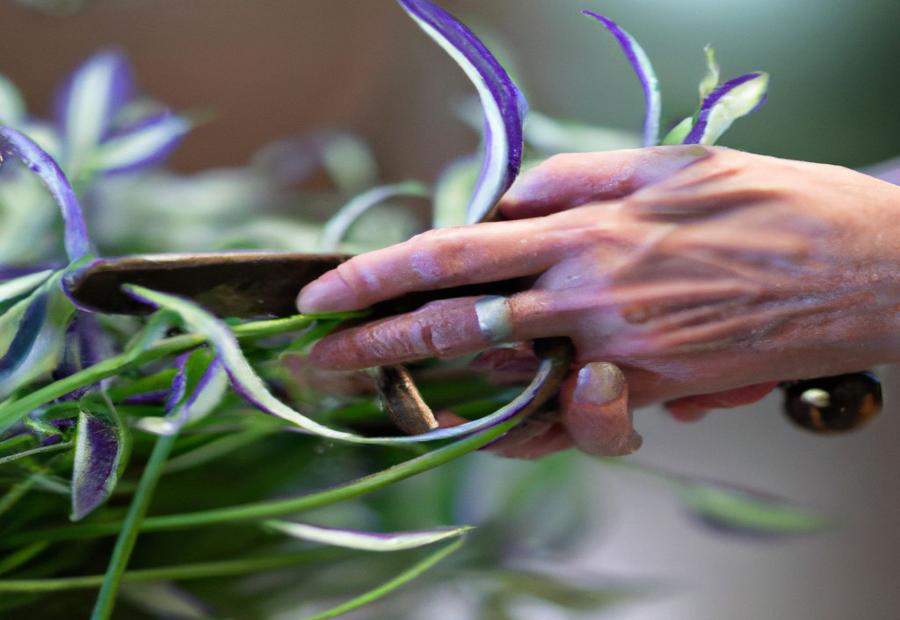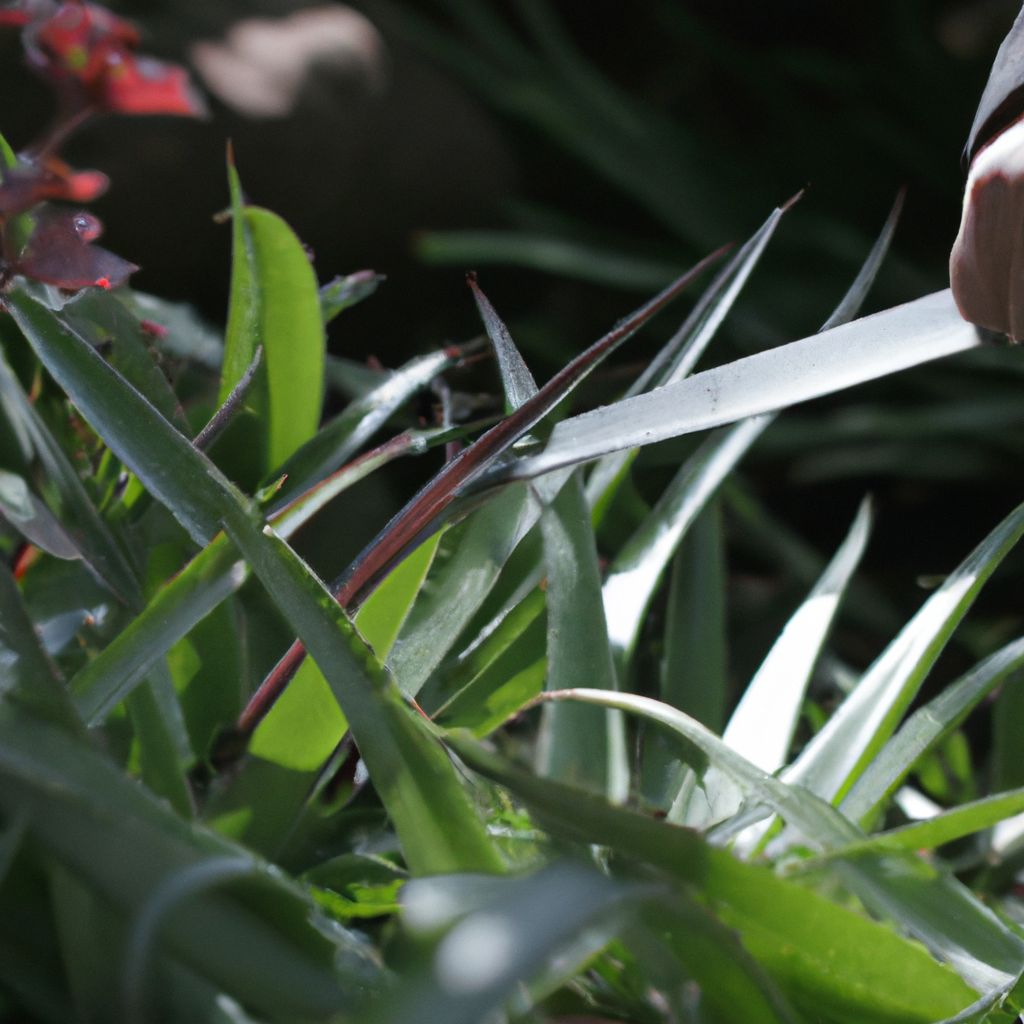Introduction to Cast Iron Plant
The Bird’s Nest Fern, also known by its scientific name Asplenium nidus, is a popular and attractive indoor plant. It is known for its large, wavy fronds that resemble a bird’s nest. If your Bird’s Nest Fern has outgrown its current pot, or you simply want to create more plants, propagating it is a great option.
In this article, we will explore the process of dividing the Cast Iron Plant, including the best time to do so, the tools and supplies needed, and a step-by-step guide to ensure successful division. We will provide some tips for successful division and common mistakes to avoid.
If you are a plant enthusiast looking to expand your collection or simply want to propagate your Cast Iron Plant, this article will provide you with the knowledge and guidance you need to propagate a Boston Fern effectively. So, let’s dive in and learn how to divide the Cast Iron Plant for a thriving and beautiful indoor garden.
Why Divide Cast Iron Plant?

Photo Credits: Allotinabox.Com by Elijah Williams
Dividing a cast iron plant is necessary for its optimal growth and propagation. By dividing the plant, you can rejuvenate its health, promote new growth, and expand your collection.
Why divide a cast iron plant? Well, dividing the plant allows it to spread and grow in new areas, preventing it from becoming crowded and stagnant. It also helps in creating new plants for yourself or to share with others, which is an excellent way to propagate and expand your collection. Additionally, dividing the plant helps to refresh the roots and improve its overall health, especially if it has become root-bound over time. If your cast iron plant has aged and is not thriving as it used to, dividing it can rejuvenate its energy and vitality. By dividing the cast iron plant, you can ensure that it retains its vigor and remains a striking addition to your indoor or outdoor space.
Pro-tip: When dividing your cast iron plant, make sure to use sharp, clean tools to prevent damage and always provide proper care and attention to the newly divided plants to ensure their successful growth.
When is the Best Time to Divide Cast Iron Plant?
The best time to divide a cast iron plant is in the spring or early summer when the plant is actively growing. Follow these steps to successfully divide a cast iron plant:
-
Prepare a new pot or planting area with well-draining soil.
-
Water the plant thoroughly a day before dividing to make the roots easier to work with.
-
Use a garden fork or shovel to carefully lift the plant out of the ground, trying not to damage the roots.
-
Gently shake the plant to remove excess soil from the roots.
-
Identify natural divisions in the plant, where the leaves cluster together. These divisions will become individual plants.
-
Use clean, sharp gardening shears to separate the plant into smaller sections. Each section should have healthy leaves and roots.
-
Plant each divided section in its own pot or in a prepared planting hole in the ground, making sure the roots are well-covered with soil.
-
Water the newly divided plants and place them in a location with indirect sunlight.
-
Keep the soil consistently moist for the first few weeks after dividing to help the plants establish.
By dividing the cast iron plant during the appropriate season, you can ensure the success of each individual plant and promote healthy growth.
What Tools and Supplies Do You Need to Divide Cast Iron Plant?
When dividing a Cast Iron Plant, you will need the following tools and supplies:
- Garden gloves to protect your hands from thorns and dirt.
- A sharp and clean pair of pruning shears or garden scissors to cut through the plant’s roots and stems.
- A garden trowel or shovel to gently dig around the plant and lift it from the ground.
- A clean and sturdy container or pot with drainage holes to transplant the divided plant into.
- Well-draining potting soil or a mixture of peat moss and perlite for the new plant’s growing medium.
- Watering can or spray bottle to water the divided plant after transplanting.
- Optional: Root hormone powder or gel to promote root growth for the newly divided plant.
Using these tools and supplies will help ensure a successful division of the Cast Iron Plant and give the new plant the best chance at thriving in its new container.
Step-by-Step Guide: How to Divide Cast Iron Plant

Photo Credits: Allotinabox.Com by Sean Adams
Dividing a cast iron plant may seem like a daunting task, but fear not! This step-by-step guide will walk you through the process, making it a breeze. From preparing the plant to replanting the divided cast iron plants, each sub-section will cover all the necessary details to help you successfully divide your beloved greenery. So, grab your gardening gloves, and let’s embark on this plant-dividing adventure together!
Step 1: Prepare the Plant
To successfully divide a cast iron plant, you need to follow these steps:
- Step 1: Prepare the plant: Begin by watering the plant thoroughly a few days before dividing it. This will help soften the soil and make it easier to work with. Trim back any dead or damaged leaves to ensure the plant’s energy is focused on growing new roots.
- Step 2: Dig up the plant: Use a sharp shovel or garden fork to carefully dig around the perimeter of the cast iron plant, creating a circle that is a few inches wider than the desired size for each division.
- Step 3: Separate the rhizomes: Once the plant is lifted, gently shake off excess soil to expose the rhizomes. Use a clean, sharp knife or pruning shears to divide the root clump into sections. Each division should have at least two or three healthy rhizomes and a good amount of roots.
- Step 4: Replant the divided cast iron plants: Prepare individual planting holes in well-draining soil for each division. Place the divisions in the holes, making sure the rhizomes are just below the soil surface. Firmly pack the soil around the divisions to eliminate air pockets and provide stability.
Pro-tip: After dividing the cast iron plant, water it thoroughly to encourage root establishment. Keep the newly divided plants in a shaded area to minimize stress and allow them to recover. Regular watering and a balanced fertilizer can help the plants thrive as they establish themselves in their new locations.
Step 2: Dig up the Plant
Step 2: Dig up the Plant
- Start by preparing the area around the cast iron plant. Remove any weeds or debris that may obstruct your access to the plant.
- Using a garden spade or fork, carefully dig around the base of the plant. Begin from the outer edges and work your way towards the center, creating a circle around the plant.
- Insert the tool into the soil at a slight angle to avoid damaging the plant’s roots. Gently lift the plant from the ground, applying pressure to the tool’s handle if necessary.
- Continue digging around the plant until you have removed the entire root ball. Take care not to break or damage the roots during this process.
- Once the plant is free from the ground, place it on a nearby tarp or surface that is easy to clean for further work.
Pro tip: Ensure that you water the plant thoroughly before digging it up. Moist soil will help the roots stay intact during the division process.
Step 3: Separate the Rhizomes
- Prepare the plant for division by thoroughly watering it several days before starting the process. This will help to naturally loosen the soil and make it easier to separate the rhizomes.
- Using a shovel or garden fork, carefully dig up the entire plant, taking care not to harm the rhizomes.
- After removing the plant from the ground, delicately separate the rhizomes by hand. Look for natural divisions or sections where the rhizomes can be effortlessly pulled or cut apart.
- Trim away any damaged or dead rhizomes, ensuring that each division has at least a few healthy rhizomes and a set of leaves. This will increase the chances of each new plant flourishing.
- When replanting the divided cast iron plants, make sure to adequately space them out to allow for growth. Dig a hole slightly larger than the root system of each division and place the rhizomes in the hole, covering them with soil.
- Thoroughly water the newly planted divisions to settle the soil and provide moisture to the roots.
- Maintain proper care for the divided plants, including regular watering, fertilizing, and the removal of any weeds or dead leaves.
- Monitor the health and growth of the divided plants over time. If any issues arise, such as wilting or yellowing leaves, take appropriate action to address the problem.
Step 4: Replant the Divided Cast Iron Plants
To successfully replant the divided cast iron plants, follow these steps:
- Prepare the divided plants by gently removing any excess soil from the rhizomes. This will make it easier to see where to plant them.
- Find a suitable location in your garden for the divided cast iron plants. They prefer shady or partially shaded areas with well-drained soil.
- Dig a hole that is slightly wider and deeper than the root ball of the divided plants.
- Replant the divided cast iron plants by placing them in the hole, making sure that the top of the rhizomes is at ground level or slightly above.
- Backfill the hole with soil, gently firming it around the roots to remove any air pockets.
- Water the newly replanted cast iron plants thoroughly, ensuring that the soil is evenly moist. This will help them establish their roots.
- Apply a layer of mulch around the plants to help conserve moisture and suppress weeds.
- Monitor the plants regularly and water as needed to keep the soil consistently moist but not soggy.
By following these steps, you can successfully replant the divided cast iron plants and promote their healthy growth. Remember to provide them with the appropriate care, including regular watering and occasional fertilization, to ensure their long-term success in your garden.
Tips for Successful Division of Cast Iron Plant

Photo Credits: Allotinabox.Com by Lawrence Torres
- Choose the right time: The best time to divide a cast iron plant is in the spring or early summer when new growth is just beginning.
- Prepare the plant: Water the plant thoroughly a day or two before dividing to ensure the soil is moist and easier to work with.
- Divide the plant: Carefully dig around the plant, loosening the soil and exposing the root ball. Use a sharp, clean knife or shovel to divide the plant into smaller sections, ensuring each section has a good amount of roots.
- Replant the divisions: Plant each division in a well-draining soil, at the same depth it was previously growing. Water the newly planted divisions thoroughly to help them establish.
- Provide proper care: After dividing, keep the plants well-watered and provide them with some shade to help minimize stress and promote root growth.
Pro-tip: Adding some organic compost or fertilizer to the soil before replanting the divisions can help provide essential nutrients for healthy growth.
By following these Tips for Successful Division of Cast Iron Plant, you can successfully divide your cast iron plant and create new plants to enjoy in your garden. Remember to be gentle when handling the plant and provide the proper care for its successful growth.
Common Mistakes to Avoid

Photo Credits: Allotinabox.Com by Jack Davis
One common mistake to avoid when dividing a cast iron plant is not preparing the plant properly. It is important to ensure that the plant is healthy and well-watered before dividing a Blue Star Fern.
Another common mistake is using dull or improper tools for dividing the plant. This can lead to damage to the roots and overall health of the plant. It is important to use sharp and clean tools to make clean cuts.
Dividing a cast iron plant at the wrong time can also be a mistake. It is best to divide the plant during its dormant period, which is typically in the spring or fall. Dividing the plant during its active growth period can cause stress and hinder its ability to recover.
After dividing the plant, it is crucial to provide it with proper care. This includes watering it regularly, providing it with the right amount of sunlight, and ensuring it has a suitable growing environment.
Dividing a cast iron plant can be stressful for the plant, so it is important to give it enough time to recover. Avoid overwatering or overfertilizing the plant immediately after division. Allow it to adjust and establish itself before making any changes to its care routine.
Can I divide my Cast Iron Plant in the winter?
Yes, you can divide your Cast Iron Plant in the winter. While the best time to divide the plant is in the spring or early summer, dividing it during the winter is still possible. However, there are a few important factors to consider.
- Temperature: Can I divide my Cast Iron Plant in the winter? Make sure the weather is not too cold or freezing when dividing the plant. Dividing during milder winter temperatures is preferable.
- Plant Dormancy: During the winter, the Cast Iron Plant may be in a state of dormancy. Dividing the plant during this period can help minimize stress and allow for a smoother transition.
- Root Care: When dividing the plant, ensure that you are gentle with the roots to avoid damaging them. Properly handle and separate the rhizomes to maintain their health and vitality.
- Replanting: After dividing the Cast Iron Plant, make sure to replant it in well-draining soil and provide proper care, even in the winter. Avoid overwatering the newly divided plants and monitor their progress closely.
The Cast Iron Plant, also known as Aspidistra elatior, is native to China and has a long history as a popular indoor plant. Its resilient nature and ability to tolerate low light conditions have made it a favorite among plant enthusiasts. The plant gets its common name from its sturdy, dark green leaves that resemble cast iron. It was first introduced to the Western world during the Victorian era and quickly gained popularity for its ability to thrive in unfavorable growing conditions. Today, the Cast Iron Plant is widely cultivated and cherished for its beauty and hardiness.
How often should I divide my Cast Iron Plant?
When it comes to dividing your Cast Iron Plant, the frequency depends on a few factors. Here are some steps to help you determine how often should I divide my Cast Iron Plant:
- Observe the growth of your plant. If you notice that your Cast Iron Plant is becoming overcrowded and the leaves are significantly smaller than usual, it may be time to divide it.
- Consider the size of your plant. Typically, Cast Iron Plants can go several years without needing division. However, if your plant has grown quite large, it may need to be divided sooner.
- Take note of the soil conditions. If your Cast Iron Plant is not thriving and the soil is depleted or compacted, dividing the plant can help rejuvenate it and improve its overall health.
- Assess the root system. If you notice the roots are becoming tightly bound and forming a dense mass, it’s a good indication that your plant would benefit from division.
Remember, it’s important to divide your Cast Iron Plant when it’s actively growing, preferably during the spring or summer months. This will give the divided sections the best chance of establishing themselves.
Fun Fact: The Cast Iron Plant, also known as Aspidistra elatior, gets its name from its ability to tolerate a wide range of conditions, including low light and neglect. It can be a great addition to indoor and outdoor gardens.
What should I do with the extra divided plants?
When you find yourself with extra divided plants from your cast iron plant, you might be wondering, “What should I do with them?” Well, there are several options available to you:
- Replant them: If you have enough space in your garden or want to bring more greenery into your home, you can simply replant these extra divided plants in other areas. This allows you to expand your collection of cast iron plants and savor their stunning foliage.
- Gift them: If you happen to know someone who loves gardening or has an interest in plants, you can give these extra divided plants as a meaningful gift. Sharing the joy of gardening can bring happiness to both you and the recipient.
- Sell or trade them: In case you have a surplus of these divided plants, you might want to consider selling or trading them with other fellow plant enthusiasts. There are several online platforms and gardening communities where you can connect with like-minded gardeners and exchange plants.
- Donate them: If you wish to contribute to a local community garden or a plant-related charity, donating the extra divided plants can be a great option. This way, others can also benefit from the beauty and advantages of cast iron plants.
- Compost them: If, by any chance, you don’t have any use for the extra divided plants, you can simply add them to your compost pile. This will aid in recycling and enriching your soil, promoting sustainability, and reducing waste.
Always remember, the choice of what to do with the extra divided plants depends solely on your personal preferences, the space available to you, and the needs of the plants. Take some time to consider which option aligns best with your goals and enjoy the rewards that come with dividing your cast iron plant.
Will dividing my Cast Iron Plant cause it to die?
Dividing your Cast Iron Plant will not cause it to die. In fact, dividing the plant can actually benefit its overall health and growth. When you divide a Cast Iron Plant, you are separating the rhizomes and creating new individual plants. This allows each plant to have more space and resources to thrive.
By dividing the Cast Iron Plant, you can rejuvenate older plants, promote new growth, and prevent overcrowding. It is a natural process that helps to maintain the health and vitality of the plant.
To ensure successful division of your Cast Iron Plant, make sure to follow the proper steps and use the right tools and supplies. Dig up the plant carefully, separate the rhizomes, and replant the divided plants in suitable soil. Water the plants adequately and provide them with the necessary care to support their growth.
Remember, the Cast Iron Plant is a hardy and resilient plant that can adapt well to division. However, it is essential to avoid common mistakes such as damaging the rhizomes or planting them in unsuitable conditions.
And here’s a fun fact: The Cast Iron Plant (Aspidistra elatior) is known for its ability to tolerate neglect and low-light conditions, making it a popular choice for indoor plants.
Frequently Asked Questions
How do I divide a cast iron plant in a pot?
To divide a cast iron plant in a pot, carefully remove the plant from its pot and gently separate the roots, removing any diseased roots. Then, pot each division immediately in slightly larger pots with fresh potting soil. Water lightly and allow the plants to recover.
When is the best time to divide a cast iron plant?
The best time to divide a cast iron plant is in the spring to early summer when the plant is in its active growth period. This allows the plant to recover before its dormant phase.
Can I divide a cast iron plant that is growing in my garden?
Yes, you can divide a cast iron plant growing in your garden. Excavate around the plant and carefully lift it out of the ground with a fork. Then, use a sharp, sterile knife to cut away any diseased roots. Gently tease the roots apart and pot each division immediately.
How often should I divide a potted cast iron plant?
To prevent the potted cast iron plant from becoming rootbound, it is recommended to divide it every 3 to 5 years. This allows the plant to have enough space for healthy growth.
What kind of soil and pots should I use when repotting divided cast iron plants?
When repotting divided cast iron plants, use fresh potting soil and choose pots that are slightly larger than each division’s root ball. Ensure the pots have drainage holes at the bottom to prevent waterlogging.
Can I immediately place the divided cast iron plants in their permanent homes?
Yes, you can immediately place the divided cast iron plants in their permanent homes without waiting for them to heal over. However, avoid watering them heavily right after division to prevent overwatering.

